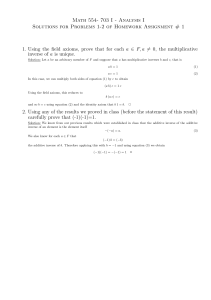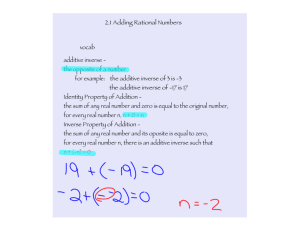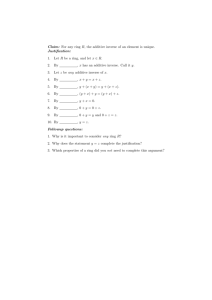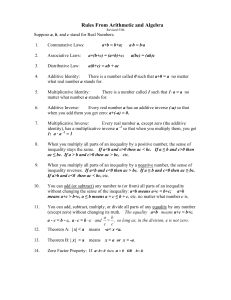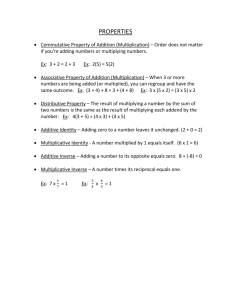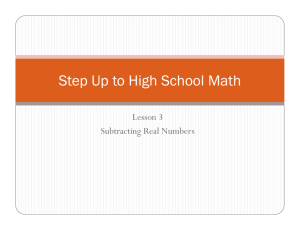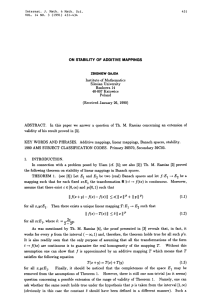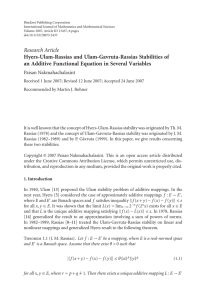Section 11
advertisement
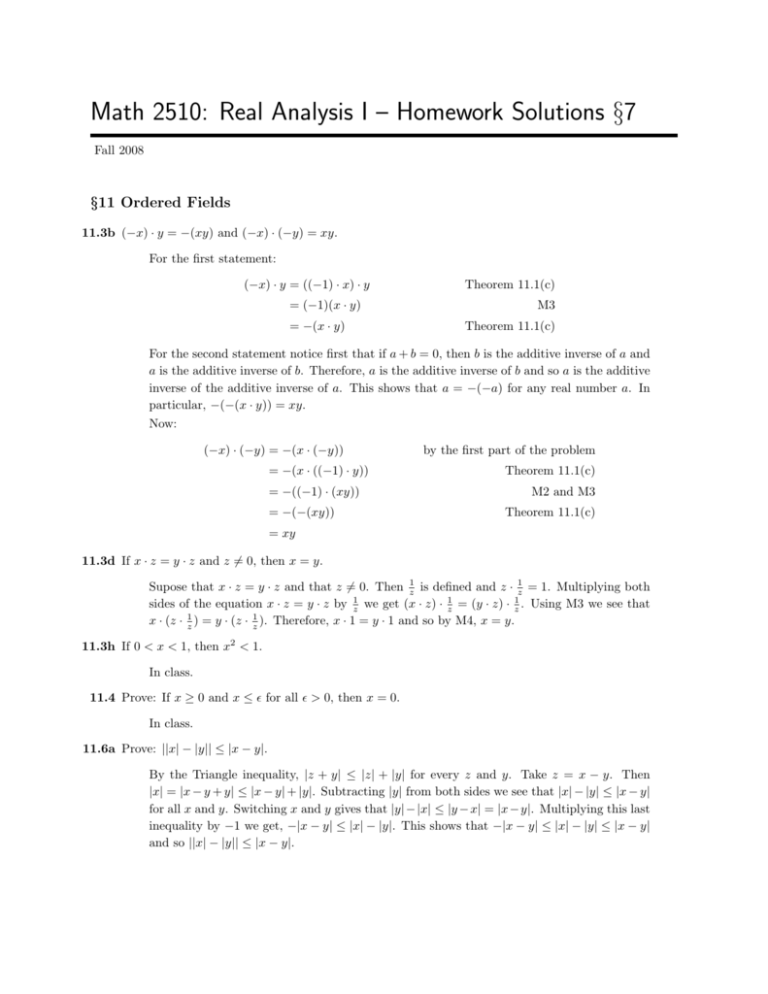
Math 2510: Real Analysis I – Homework Solutions §7 Fall 2008 §11 Ordered Fields 11.3b (−x) · y = −(xy) and (−x) · (−y) = xy. For the first statement: (−x) · y = ((−1) · x) · y = (−1)(x · y) = −(x · y) Theorem 11.1(c) M3 Theorem 11.1(c) For the second statement notice first that if a + b = 0, then b is the additive inverse of a and a is the additive inverse of b. Therefore, a is the additive inverse of b and so a is the additive inverse of the additive inverse of a. This shows that a = −(−a) for any real number a. In particular, −(−(x · y)) = xy. Now: (−x) · (−y) = −(x · (−y)) = −(x · ((−1) · y)) = −((−1) · (xy)) = −(−(xy)) by the first part of the problem Theorem 11.1(c) M2 and M3 Theorem 11.1(c) = xy 11.3d If x · z = y · z and z 6= 0, then x = y. Supose that x · z = y · z and that z 6= 0. Then z1 is defined and z · z1 = 1. Multiplying both sides of the equation x · z = y · z by z1 we get (x · z) · z1 = (y · z) · z1 . Using M3 we see that x · (z · z1 ) = y · (z · z1 ). Therefore, x · 1 = y · 1 and so by M4, x = y. 11.3h If 0 < x < 1, then x2 < 1. In class. 11.4 Prove: If x ≥ 0 and x ≤ for all > 0, then x = 0. In class. 11.6a Prove: ||x| − |y|| ≤ |x − y|. By the Triangle inequality, |z + y| ≤ |z| + |y| for every z and y. Take z = x − y. Then |x| = |x − y + y| ≤ |x − y| + |y|. Subtracting |y| from both sides we see that |x| − |y| ≤ |x − y| for all x and y. Switching x and y gives that |y| − |x| ≤ |y − x| = |x − y|. Multiplying this last inequality by −1 we get, −|x − y| ≤ |x| − |y|. This shows that −|x − y| ≤ |x| − |y| ≤ |x − y| and so ||x| − |y|| ≤ |x − y|.

